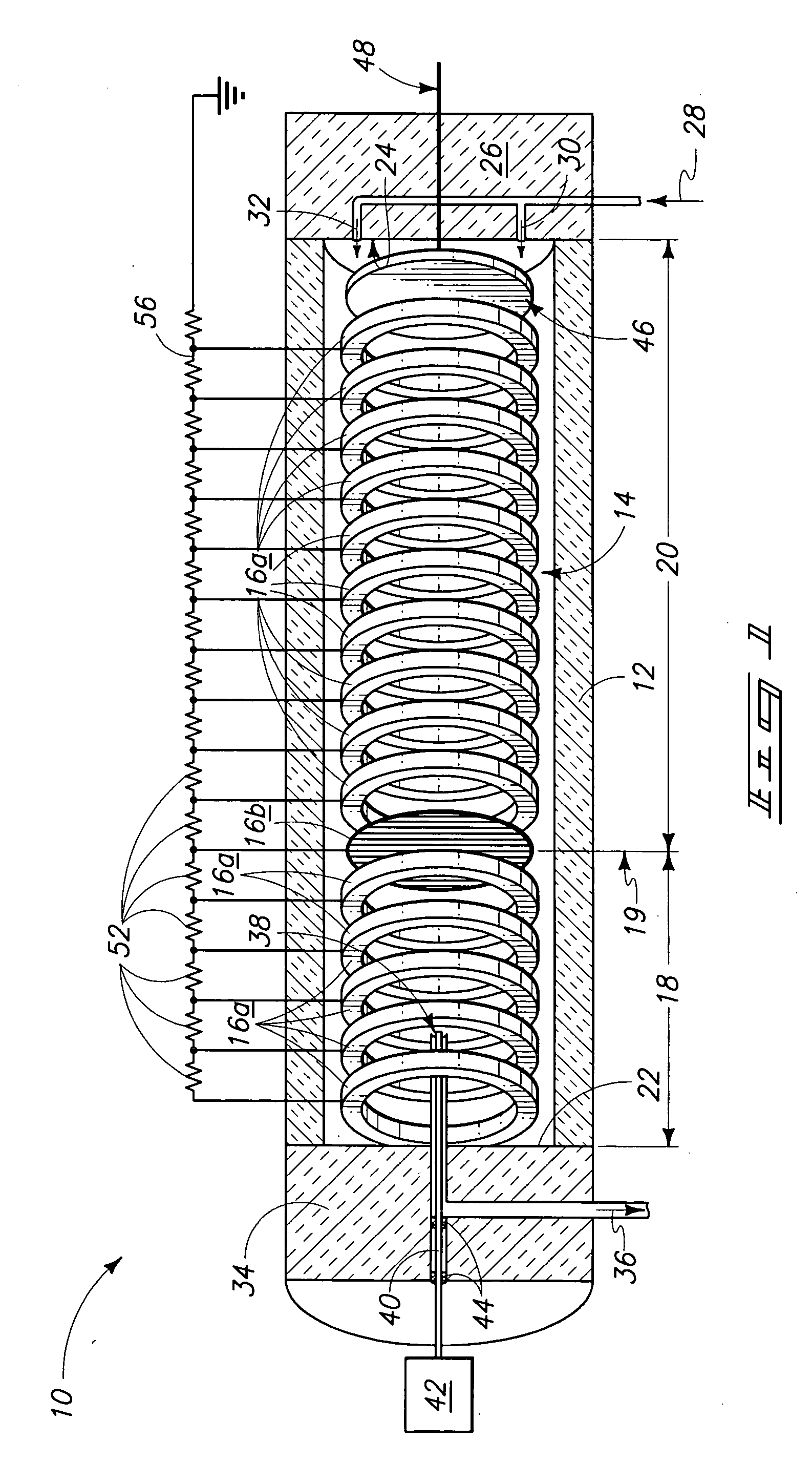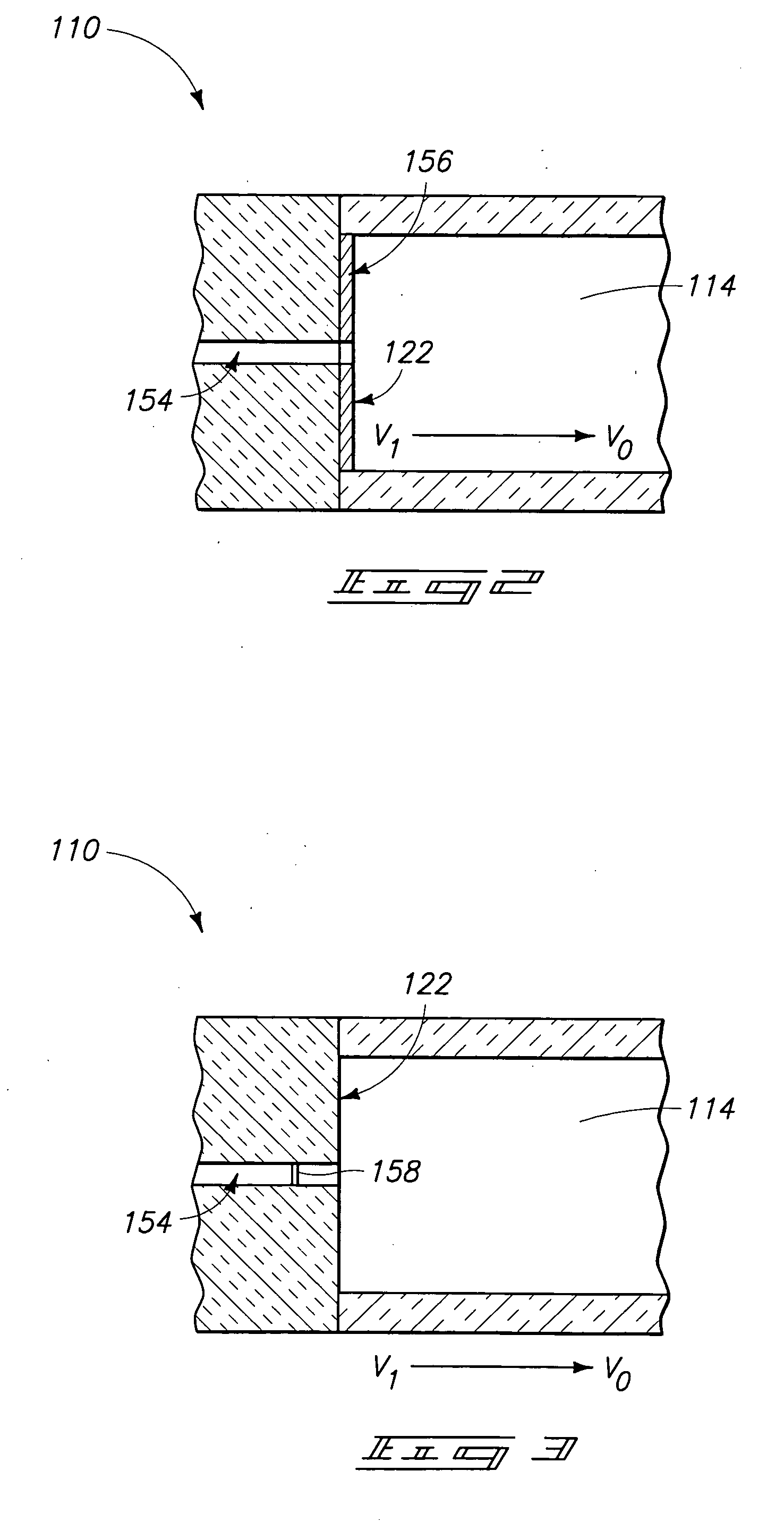Ion mobility spectrometry method and apparatus
a spectrometry and mobility technology, applied in the field of ion mobility spectroscopy systems, can solve the problems of reducing resolving power, increasing current heats the solution, and limiting the resolving power and miniaturization,
- Summary
- Abstract
- Description
- Claims
- Application Information
AI Technical Summary
Problems solved by technology
Method used
Image
Examples
example 1
Liquid Phase Ion Mobility for HCl in Decanol
[0080] An aqueous solution of 0.1 M HCl was injected at one μL / min for 30 seconds into the liquid phase of a liquid phase IMS device. The device utilized for the HCl migration analysis was a Teflon block device similar to that shown in FIG. 4 having a 20 mm overall chamber length. For the present study, no ion gate or other potential well was applied thereby allowing ions in the injected sample to pass directly through the device without being trapped at an interface. The drift fluid utilized was decanol. As show in FIG. 6, the resulting current obtained at the collection electrode was around 650 nAmps.
example 2
Liquid Phase IMS Analysis of NH4+
[0081] A liquid phase ion mobility spectrum was obtained by injecting 0.25 μL / min of an aqueous solution containing 50 ppm NH4NO3 into a mineral oil liquid phase. A 12.25 mm drift tube length was utilized with a Teflon tube housing. An ion gate was pulsed open for 5 seconds. A 3 kV potential was placed on the first ring electrode, the last ring electrode was grounded and each of 16 electrodes within the chamber was connected in series with intervening 1 MΩ resistors. Ionization of the sample was achieved utilizing electro-dispersion ionization. The resulting spectrum is shown in FIG. 7. The complex spectrum may be indicative of partially solvated (with coordinated water) of the NH4+ ions. Improved desolvation can be achieved utilizing a more polar drift liquid.
example 3
Liquid Phase IMS Analysis of Na+
[0082] An aqueous sample containing 50 ppm of NaCl was introduced into a mineral oil liquid phase at a rate of 1 μL / min. A 1 kV voltage was applied to the sample injection needle and the ion gate was pulsed for 0.2 seconds. The resulting spectrum shown in FIG. 8 indicates a resolving power of about 15. The resolving power can be increased by applying increased voltage on the sample transfer tube and / or varying the gate pulse width. The gate utilized for obtaining the sodium ion liquid phase IMS spectra was a reversible potential well type (described above).
PUM
| Property | Measurement | Unit |
|---|---|---|
| length | aaaaa | aaaaa |
| diameters | aaaaa | aaaaa |
| voltage | aaaaa | aaaaa |
Abstract
Description
Claims
Application Information
 Login to View More
Login to View More - R&D
- Intellectual Property
- Life Sciences
- Materials
- Tech Scout
- Unparalleled Data Quality
- Higher Quality Content
- 60% Fewer Hallucinations
Browse by: Latest US Patents, China's latest patents, Technical Efficacy Thesaurus, Application Domain, Technology Topic, Popular Technical Reports.
© 2025 PatSnap. All rights reserved.Legal|Privacy policy|Modern Slavery Act Transparency Statement|Sitemap|About US| Contact US: help@patsnap.com



